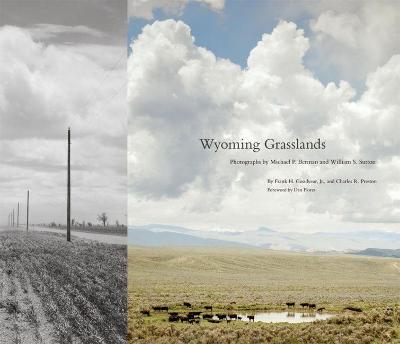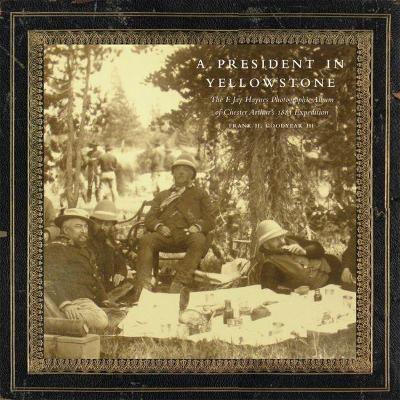The Charles M. Russell Center Series on Art and Photography of the American West
2 total works
Naturalist John James Audubon found the Great Plains and their wildlife so riveting when he visited the region in 1834 that he broke off a letter to his wife because he was too excited to write. In the almost two hundred years since then, the Wyoming landscape, deemed the ""Italy of America"" by landscape painter Albert Bierstadt, has retained its glory if not its place in the imagination of the American public. This book reminds us of the remarkable bounty contained in the wild beauty and rich history of the Wyoming grasslands - even as these riches are under threat from both human and natural forces.
This landscape is now captured in all its spectacular diversity in the photography of Michael P. Berman and William S. Sutton, two of the modern American West's most accomplished and well-known landscape photographers. Essays by Frank H. Goodyear, Jr., and Charles R. Preston provide a contextual framework for the images. Goodyear introduces us to the imagery of the American West and explains the place of Berman's and Sutton's work within that tradition, and Preston focuses on the natural history of the grasslands, illuminating the area's ecological diversity and changes through the seasons and over the years.
In 2012 Berman and Sutton launched their massive Wyoming Grasslands Photographic Project, a partnership between The Nature Conservancy, Wyoming Chapter, and the Buffalo Bill Center of the West. Working in the tradition of late-nineteenth-century explorers and photographers of the American West, Berman and Sutton shot more than 50,000 digital photographs of Wyoming prairie, from the Red Desert of southwestern Wyoming to the Thunder Basin National Grassland of the state's northeastern corner. The best of their extraordinarily sensitive, revealing, and powerful images appear in these pages, documenting the sweep and the seasons of the Wyoming landscape.
In eloquent words and pictures, including a foreword by environmental historian Dan Flores, Wyoming Grasslands offers dramatic proof of how the land that inspired the likes of Audubon and Bierstadt, while having altered over time, still holds and demands our attention.
This landscape is now captured in all its spectacular diversity in the photography of Michael P. Berman and William S. Sutton, two of the modern American West's most accomplished and well-known landscape photographers. Essays by Frank H. Goodyear, Jr., and Charles R. Preston provide a contextual framework for the images. Goodyear introduces us to the imagery of the American West and explains the place of Berman's and Sutton's work within that tradition, and Preston focuses on the natural history of the grasslands, illuminating the area's ecological diversity and changes through the seasons and over the years.
In 2012 Berman and Sutton launched their massive Wyoming Grasslands Photographic Project, a partnership between The Nature Conservancy, Wyoming Chapter, and the Buffalo Bill Center of the West. Working in the tradition of late-nineteenth-century explorers and photographers of the American West, Berman and Sutton shot more than 50,000 digital photographs of Wyoming prairie, from the Red Desert of southwestern Wyoming to the Thunder Basin National Grassland of the state's northeastern corner. The best of their extraordinarily sensitive, revealing, and powerful images appear in these pages, documenting the sweep and the seasons of the Wyoming landscape.
In eloquent words and pictures, including a foreword by environmental historian Dan Flores, Wyoming Grasslands offers dramatic proof of how the land that inspired the likes of Audubon and Bierstadt, while having altered over time, still holds and demands our attention.
On the morning of July 30, 1883, President Chester A. Arthur embarked on a trip of historic proportions. His destination was Yellowstone National Park, established by an act of Congress only eleven years earlier. No sitting president had ever traveled this far west. Arthur's host and primary guide would be Philip H. Sheridan, the famed Union general. Also slated to join the expedition was a young photographer, Frank Jay Haynes. This elegant - and fascinating - book showcases Haynes's remarkable photographic album from their six-week journey.
A premier nineteenth-century landscape photographer, F. Jay Haynes, as he was known professionally, originally compiled the leather-bound album as a commemorative piece. As only six copies are known to exist, it has rarely been seen. The album's 104 images are accompanied by captions written by General Sheridan's brother, Colonel Michael V. Sheridan, who wrote daily dispatches that were distributed by the Associated Press.
In his informative introduction, historian Frank H. Goodyear III provides background about the excursion and explains the historic and aesthetic significance of Haynes's photographs. He then re-creates Arthur's journey by reintroducing Haynes's stunning images - along with Sheridan's original captions - including views of the Tetons and other landmarks; portraits of President Arthur, General Sheridan, and fellow travelers engaged in activities along the route; and images of the Shoshone and Arapaho leaders who gathered to greet the visiting party.
Published on the occasion of the reopening of the Haynes Photography Shop in Yellowstone, A President in Yellowstone offers a unique entry into the park's storied past.
A premier nineteenth-century landscape photographer, F. Jay Haynes, as he was known professionally, originally compiled the leather-bound album as a commemorative piece. As only six copies are known to exist, it has rarely been seen. The album's 104 images are accompanied by captions written by General Sheridan's brother, Colonel Michael V. Sheridan, who wrote daily dispatches that were distributed by the Associated Press.
In his informative introduction, historian Frank H. Goodyear III provides background about the excursion and explains the historic and aesthetic significance of Haynes's photographs. He then re-creates Arthur's journey by reintroducing Haynes's stunning images - along with Sheridan's original captions - including views of the Tetons and other landmarks; portraits of President Arthur, General Sheridan, and fellow travelers engaged in activities along the route; and images of the Shoshone and Arapaho leaders who gathered to greet the visiting party.
Published on the occasion of the reopening of the Haynes Photography Shop in Yellowstone, A President in Yellowstone offers a unique entry into the park's storied past.

